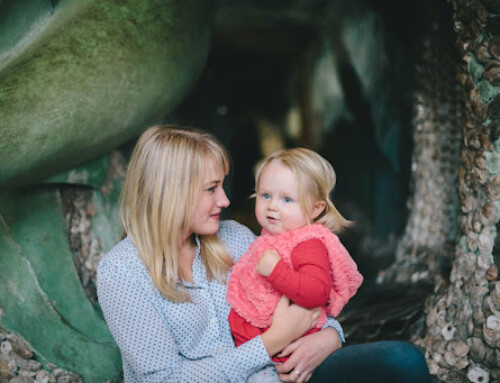Does your child look at you when you call his or her name? Does your child give you eye contact when the conversation is directed at him or her? Eye contact is a foundational skill in learning language. It’s how we demonstrate listening and understanding that another person is trying to communicate with us. Often children who have poor eye contact will have difficulty learning language. Here are three things you can do to improve eye contact in your child:
- Ask and wait. When you call your child’s name or ask a question, give him or her plenty of time to respond. It can take a child several seconds to process what you’ve said and respond to you. Try counting a full 5-10 seconds before asking again. “John”…1,2,3,4,5.
- Gently direct your child’s gaze with your hands. Using both hands to guide their attention, bring your face close to theirs. You can do this while singing a song together, saying hello and goodbye, or modeling how to ask for something.
- Put a sticker on your nose. Direct your child’s attention to your face with activities at face-level. Point to the sticker when saying their name or requesting. Let your child place stickers, face paint, or make-up while you talk about the activity.
I’ve made a short video talking about ways you can increase eye contact with your child. Click here to watch.
Interested in learning more? Check out my book for parents called “30 Days to Get Your Toddler Talking”. It’s a 30 day step-by-step guide to increasing communication and time on task-using toys you probably already have at home. Click here to buy it.















Leave A Comment
You must be logged in to post a comment.